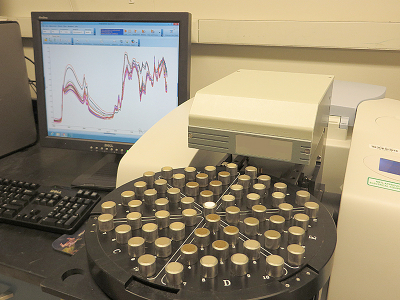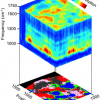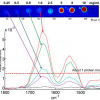
Researchers led by Argonne National Laboratory investigated the suitability of diffuse reflectance Fourier transform mid-infrared (DRIFT) spectroscopy to discriminate variations in the physical and chemical properties of soil to improve estimates of the spatial variability of carbon stocks and the extent of organic matter decomposition in these soils. The researchers analysed archived soils collected from a 2800-km latitudinal transect across Alaska to provide a representative range of climate, vegetation, surficial geology and soil types for the region. The chemical composition of organic matter, as well as site and soil properties, exerted strong multivariate influences on the DRIFT spectra. Spectral differences indicated that soils with less decomposed organic matter contained more relatively fresh materials, such as carbohydrates and aliphatics; whereas, clays and silicates were incorporated into more degraded soils. The team identified a single spectral band that might be used to quickly estimate soil organic carbon and total nitrogen concentrations. Overall, the study demonstrated that DRIFT spectroscopy can serve as a valuable tool for quickly and reliably assessing variations in the amount and composition of organic matter in northern cold-region soils.
Funding
This study was supported by the US Department of Energy, Office of Science, Office of Biological and Environmental Research, Climate and Environmental Science Division, Terrestrial Ecosystem Science Program under contract DE-AC02-06CH11357 to Argonne National Laboratory. F. Calderón was supported by the US Department of Agriculture, Agricultural Research Service.
Reference
R. Matamala, F.J. Calderón, J.D. Jastrow, Z. Fan, S.M. Hofmann, G.J. Michaelson, U. Mishra and C.L. Ping, “Influence of site and soil properties on the DRIFT spectra of northern cold-region soils”, Geoderma 305, 80–91 (2017). doi: https://doi.org/10.1016/j.geoderma.2017.05.014








